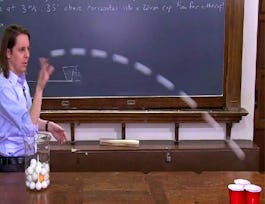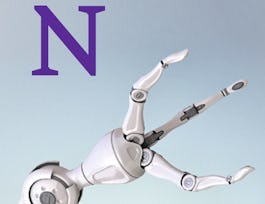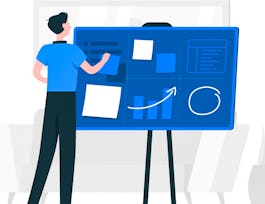This is the 3rd and final course of the spacecraft relative motion course sequence. This course presents a capstone design challenge where you get to develop, simulate and study how to approach a tumbling debris object. The servicer starts from far away and carefully does a series of maneuver to get closer and closer in a safe manner. As the debris object is tumbling, the servicer will have to account for relative attitude motion as well. The final approach is in a debris body-fixed manner illustrating a case of controlling non-Keplerian motion.



Spacecraft Formation Flying and Control Capstone Project
This course is part of Spacecraft Formation Relative Orbits Specialization

Instructor: Hanspeter Schaub
Sponsored by InternMart, Inc
What you'll learn
Develop long range approach trajectory for a rendezvous maneuver
Simulated relative motion control solutions in LVLH frame
Implement non-Keplerian relative motion reference trajectories to fly in a body-fixed manner relative to the debris object.
Details to know

Add to your LinkedIn profile
8 assignments
See how employees at top companies are mastering in-demand skills

Build your subject-matter expertise
- Learn new concepts from industry experts
- Gain a foundational understanding of a subject or tool
- Develop job-relevant skills with hands-on projects
- Earn a shareable career certificate


Earn a career certificate
Add this credential to your LinkedIn profile, resume, or CV
Share it on social media and in your performance review

There are 4 modules in this course
Welcome to the capstone project of the course sequence on spacecraft formation flying dynamics and control.
What's included
1 video
In this module we study how to use a Hohmann transfer to maneuver a servicer spacecraft close to a space debris object. The debris is in a circular orbit with a different radius. Here we study how much fuel such a maneuver will take, the required phasing angle, as well as look at the final maneuver trajectory motion as seen by the chief LVLH frame to determine the smallest miss distance to the debris object.
What's included
1 reading2 assignments
Here we investigate slowly approaching the debris object. We start with a basic drifting orbit and then look at a safety spiral about the debris object.
What's included
3 assignments
Next we are ready to begin our final approach to the debris object. Sadly, the debris object is not holding a steady attitude, but rather it is tumbling. This complicates are final approach as we must control our relative to the debris body-fixed frame to ensure we approach the debris grappling point without colliding in it. What fun!
What's included
3 assignments
Instructor

Offered by
Why people choose Coursera for their career




Recommended if you're interested in Physical Science and Engineering

Rice University

Northwestern University

University of Toronto

NIIT

Open new doors with Coursera Plus
Unlimited access to 10,000+ world-class courses, hands-on projects, and job-ready certificate programs - all included in your subscription
Advance your career with an online degree
Earn a degree from world-class universities - 100% online
Join over 3,400 global companies that choose Coursera for Business
Upskill your employees to excel in the digital economy


